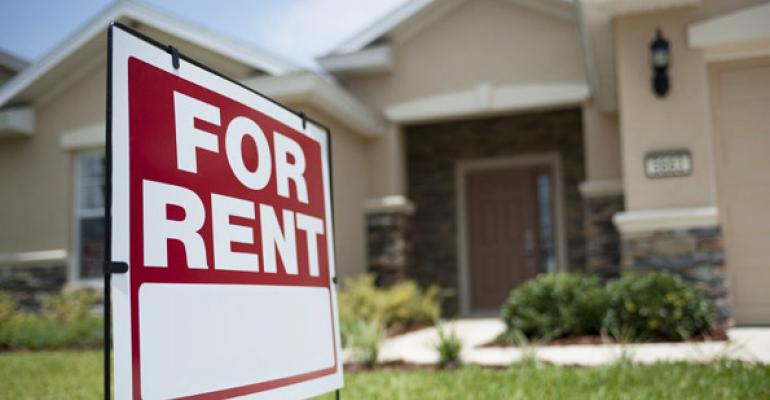The business of renting single-family homes has blossomed in recent years with large players buying swaths of vacant homes and with homebuyers often sitting on the sidelines over the past few years. Fundamentals have been strong, particularly with vacancy rates at low levels.
But one hitch could be too much new rental housing development competing with existing rental stock while renters’ wages growth could potentially be slowing down.
“That will shift the balance over the next year to favor renters a bit more in contrast to the strong landlord market we’ve seen over the past five years,” says Daren Blomquist, senior vice president for ATTOM Data (formerly known as RealtyTrac).
Single-family rents have been rising quickly in recent years.
Average rents for single-family rental increased 4.5 percent 2017 compared to the year before across the 375 U.S. counties tracked by ATTOM Data.
“Renting a single-family home has become a more mainstream and viable option over the last seven years,” says John Burns, CEO of Burns Real Estate Consulting.
Burns Real Estate Consulting found a similar increase of about 4.0 percent in the markets it tracks. That’s slower than the 5.7 percent growth in average wages over the past year across those same counties.
“That is good news because over the past few years rents and home prices have far outpaced wage growth,” says Blomquist.
Very few rental houses are now vacant. Less than 5.0 percent of the rental houses operated by the large real estate investment trusts are now vacant, according to Burns. In the broader market, ATTOM Data found an average vacancy rate of 4.0 percent across 473 countries it studied. That’s up nearly half a percentage point compared to the year before. (ATTOM tracks vacancies with data from the Post Office, which can confirm whether the mail is being picked up at the houses that ATTOM as identified as being single-family rentals.)
Vacancy rates are rising the most in the places were landlords are now motivated to buy and renovate homes to offer as rental houses.
“Not surprisingly, some of the highest vacancy rates are in markets with the highest potential rental returns such as Chicago, Detroit, Indianapolis, St, Louis and Baltimore,” says Blomquist.
The inventory of single-family rental houses grew dramatically, to 12 percent of all housing units in 2015, up from 9 percent in 2006, according to Burns.
“More units are coming online thanks to this investment strategy spreading to the masses,” says Blomquist. Developers are also creating new rental apartments, which can compete with rental houses for residents.
Strong demand for rental houses has helped fill most of these new rental units. The demand for single-family rental houses is strong. “Job growth remains very solid across most top single-family rental markets—that’s good for rents,” says Rick Palacios, senior vice president and head of research for Burns. “At the same time, income growth is moving nicely higher in these markets, which bodes well for continued rent growth.”
It’s not clear that the economy and wages can continue to support the sky high rents and rapid rate of increase in rents that we’ve seen the past few years—and which some single-family rental investors are depending on, says Blomquist. Tepid wage growth is far and away the most important limit on how much landlords can raise their rents.
“We do see several bellwether markets where rents were basically flat, such as the Inland Empire of Southern California and Orlando, Fla., or even fell on average. Rents fell 1 percent over the last year in Las Vegas.

